In theory residual drift could be performed in conjunction with a performance of the source work. A sonogram of a recording of Ionisation was used to generate a score and accompanying pre-recorded electronics. The image of the sonogram was rendered in illustrator focussing on the range of the bass flute C2-around C4. Because sonograms are probably least effective at visualizing percussive works, features such as snare drum rolls appear as continuous pitches. This deficit was put to use in transforming Ionisation into a score for a solo instrument that makes its sound through "continuous" (as opposed to discrete) actions. The first few seconds of the Ionisation sonogram and the score of residual drift are shown below (note the "piano roll" style pitch indication is used as a "playhead" for the scrolling score to orientate the performer.
|
The sonogram was processed in Photoshop and then Illustrator to further "smooth" the features and to reduce hue variation. The bass flute graphical score was rendered in broadly three hues, corresponding to varied tonal qualities of the bass flute: normal tone, diffuse tone and noise/breath. In performance the method of rendering these qualities is determined by the performer. The instrument is amplified to accentuate these tonal variations.
A sonogram of the sonification rendered by Photoshop.
A sonogram of the sonification rendered by Illustrator.
A sonogram of the false harmonics sonification.
|
The electronic component was rendered by resonifying the sonogram using processes first developed for my work
unhörbares wird hörbar [2013] and discussed here and here. Originally a long file (24294px) was used generating 38 minutes of audio that was compressed to 8 minutes, but finally a short 4859 px version was sonified creating an audio file of roughly 8 minutes without compression. The change was made to avoid the continuous "flutter and wow"-like effects created by compressing the file by a factor of five. The final version of the electronics part incorporates three versions of the sonification: processed by photoshop, processed by illustrator with added false harmonics and a version featuring a sonogram of just the upper harmonics of the recording (which were excluded in the image used to make the score). The high harmonics version prominently features the imprint of Ionisation's characteristic sirens.
Because the resonification software I built renders the audio in a mono file the audio was also spatialised using a process similar to that used in my work in nomine tenebris [2014] - that is detected pitches in to audio file were used to spatialize the mono track. Detected pitches were also used to generate "false harmonics" in one of the recordings by ring modulating the audio multiple times to add higher but related upper frequencies.
The three audio files were mixed together with some EQ and audio compression to create the final electronic part. The scrolling score and audio file are both played in the Decibel Scoreplayer. The work was written for and is dedicated to Cat Hope. |

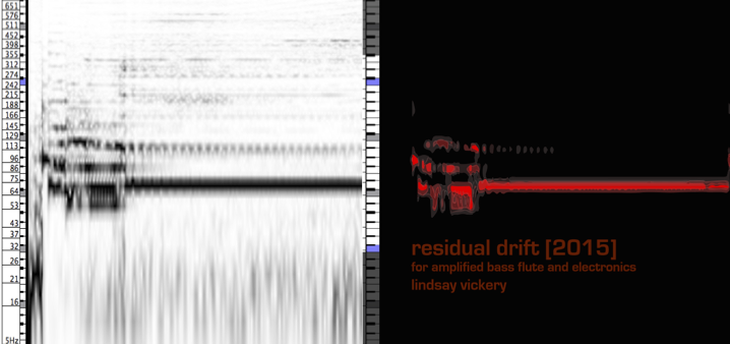
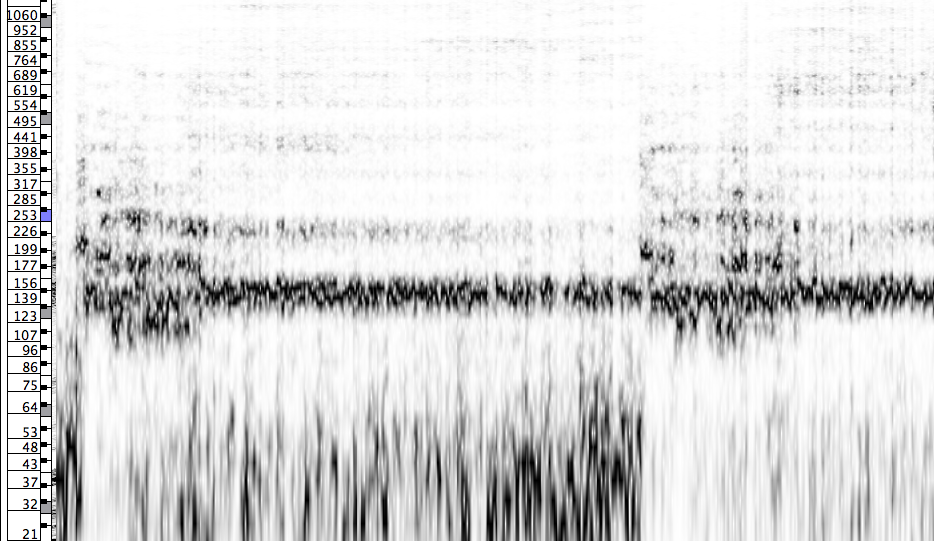
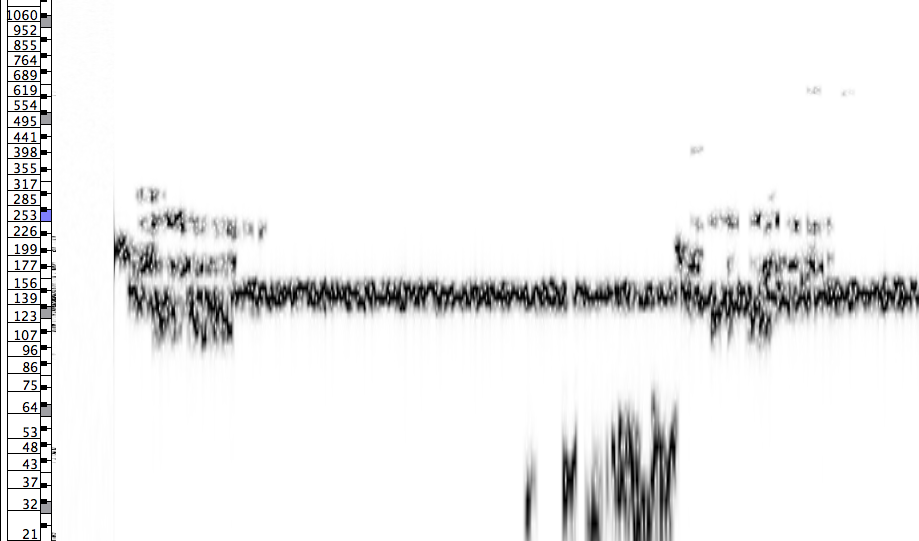
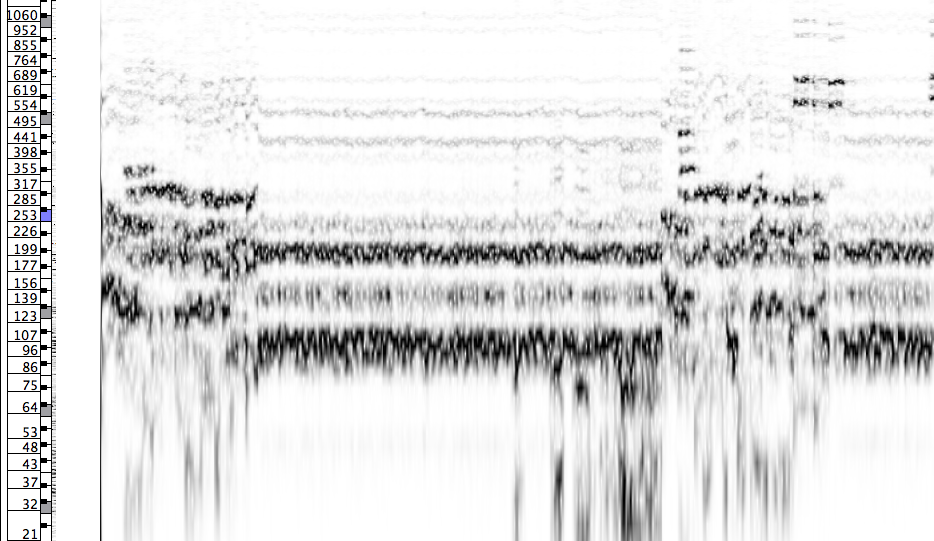
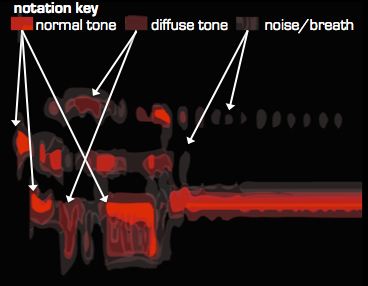
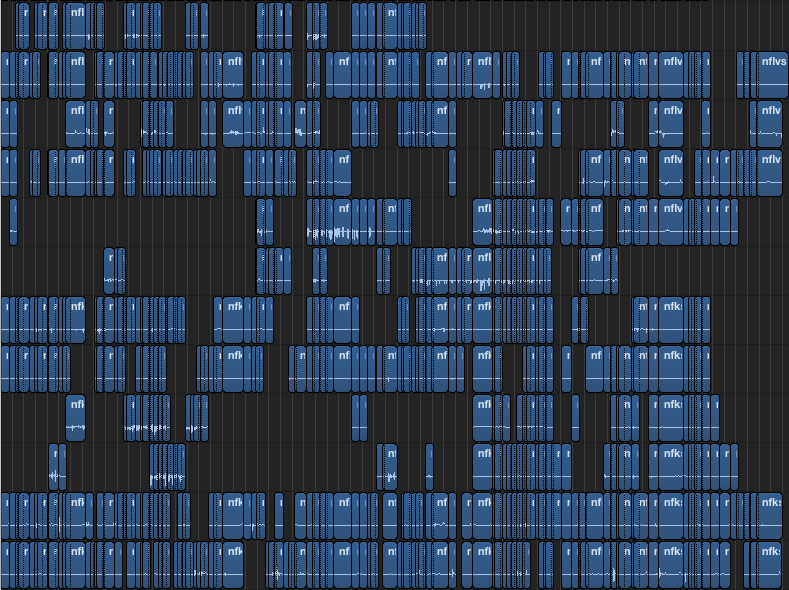



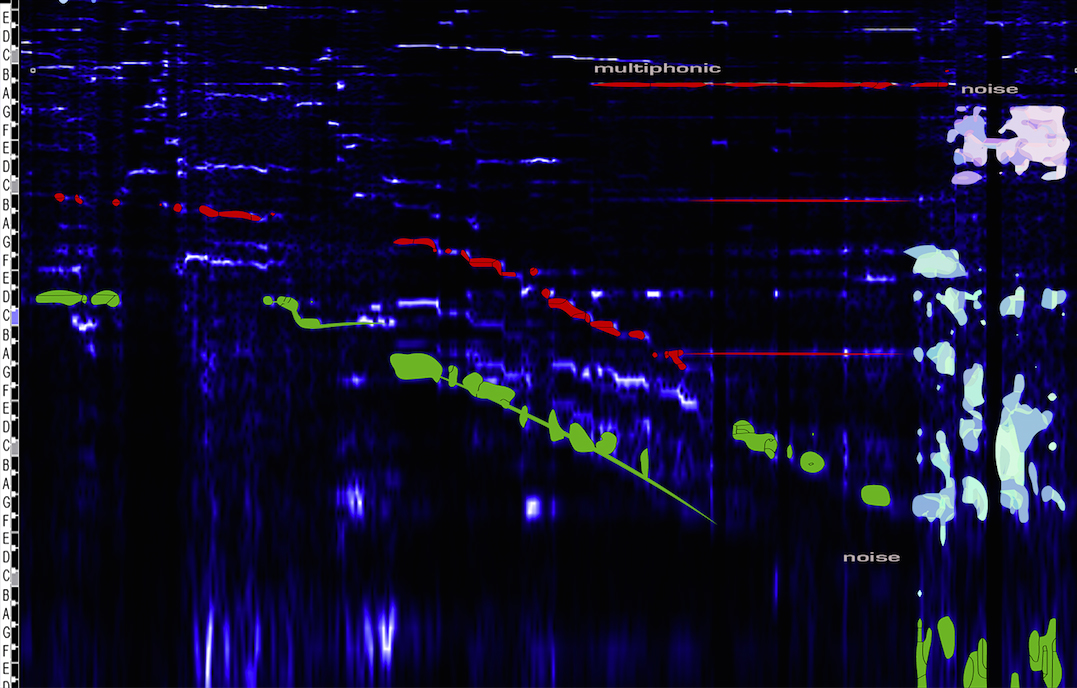
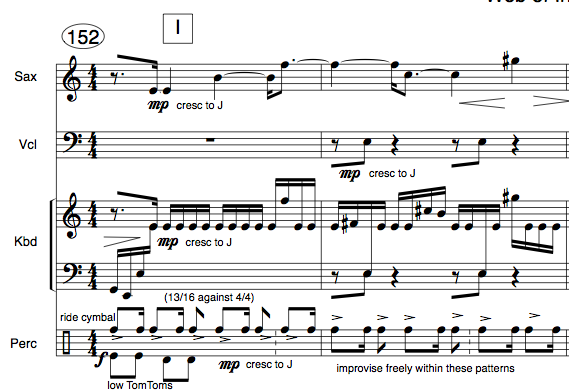
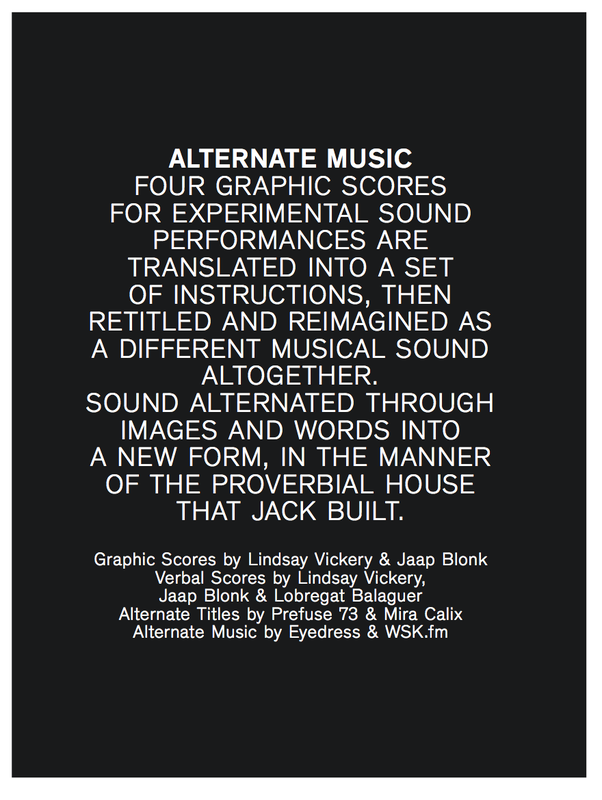
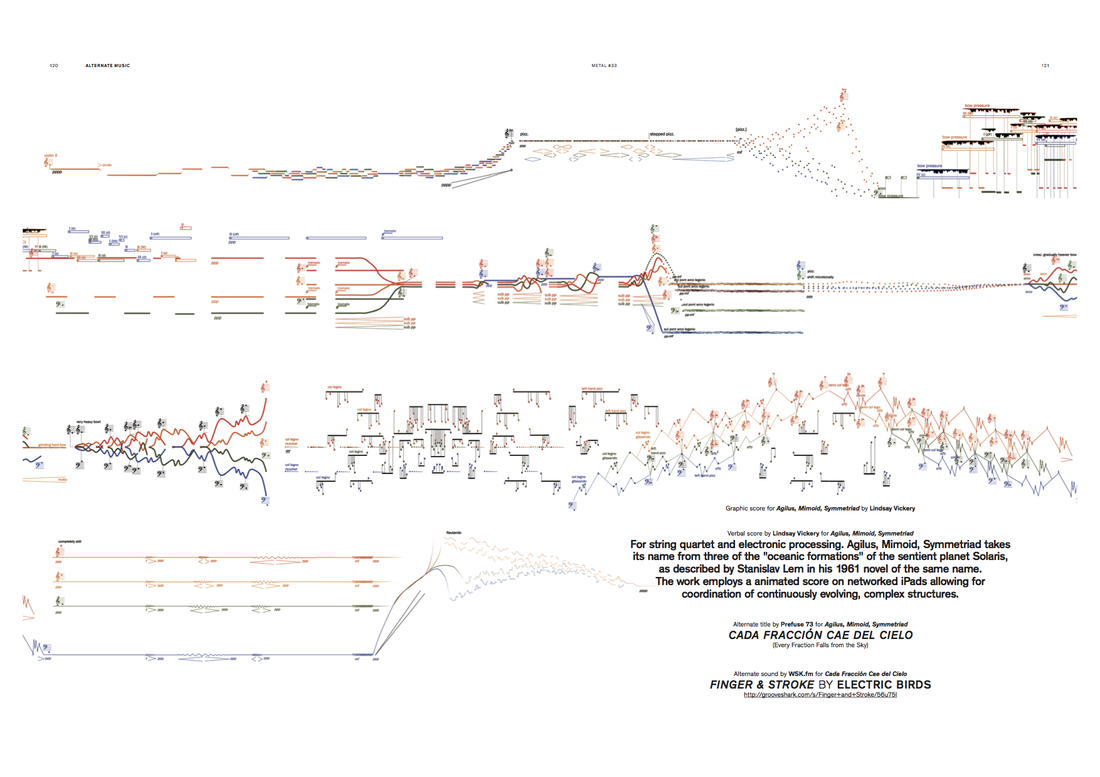
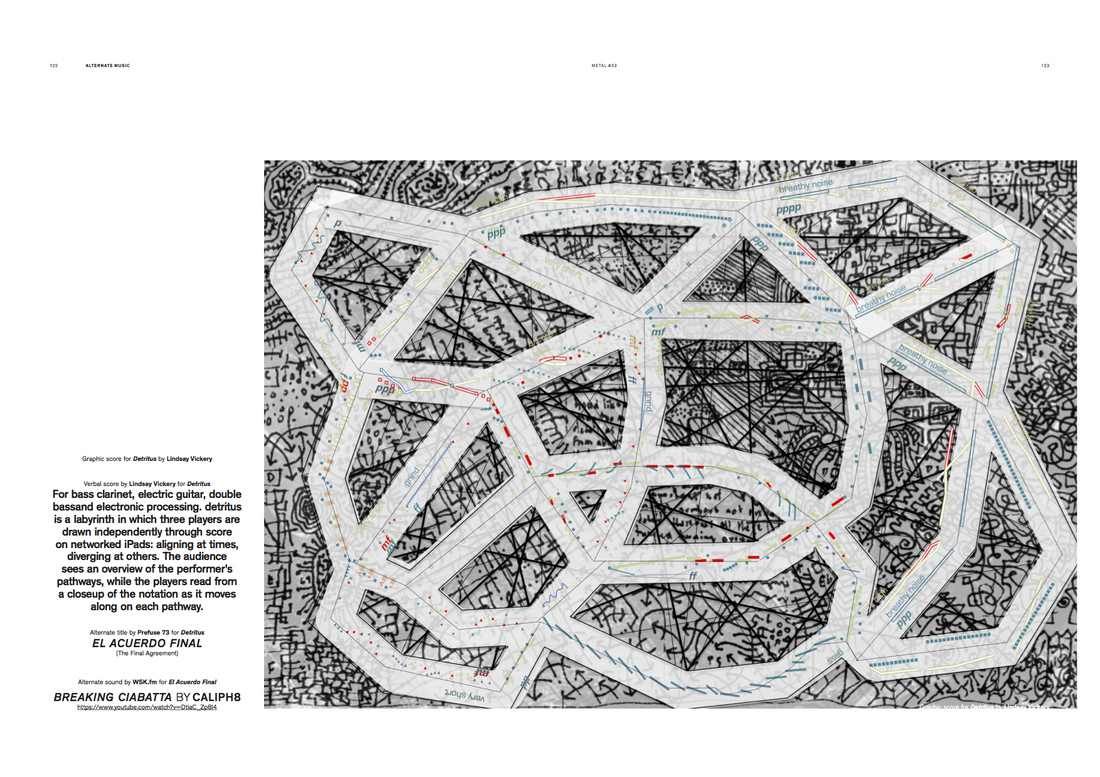







 RSS Feed
RSS Feed
